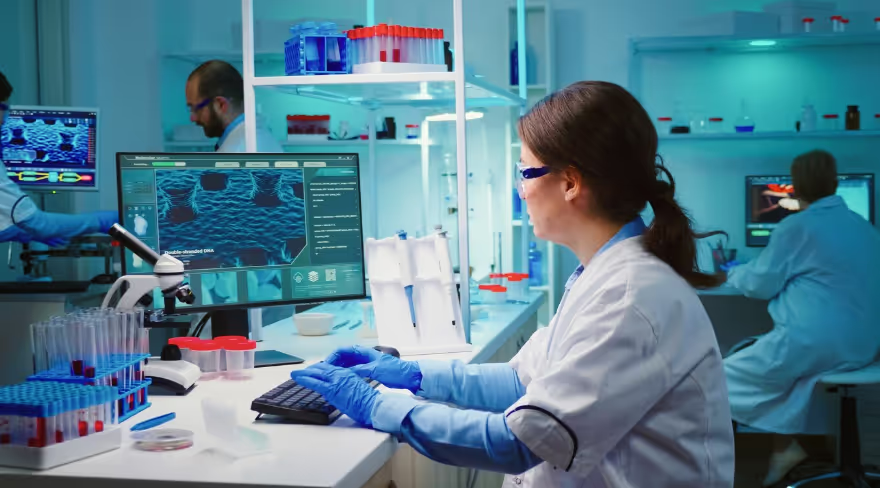Stay informed with our newsletter.
.webp)

.webp)

Engineers at the University of Pennsylvania have successfully modified a toxic fungus to create a compound with cancer-fighting properties. This breakthrough showcases how harmful natural substances can be engineered for medical benefits. By altering the fungus’s genetic structure, researchers were able to produce a compound that may be used in future cancer treatments. The discovery could pave the way for innovative approaches in drug development, offering hope for more effective and targeted cancer therapies.

A team of researchers led by the University of Pennsylvania has achieved a remarkable breakthrough by turning a highly toxic fungus into a potential cancer-fighting treatment. The scientists managed to extract a novel group of molecules from Aspergillus flavus, a fungus notorious for its danger to humans and association with mysterious deaths, particularly those linked to ancient tomb excavations. After isolating these molecules, the team chemically modified them and conducted experiments against leukemia cells. The result was a promising anti-cancer compound that showed effectiveness comparable to some currently approved chemotherapy drugs, and it could pave the way for new discoveries in fungal-based medicine.
According to Sherry Gao, a leading researcher involved in the study and a faculty member in chemical and biomolecular engineering as well as bioengineering, this discovery echoes the medical potential of natural products like penicillin, which also originated from fungi. The new compound, derived from a once-feared organism, may be just one of many valuable medicines waiting to be uncovered in the fungal world.
Aspergillus flavus, easily identified by its yellow spores, has been infamous for centuries. It was linked to a series of mysterious deaths following the opening of King Tutankhamun's tomb in the 1920s, leading to widespread speculation about a "pharaoh’s curse." Later investigations suggested that dormant spores of this fungus could have been responsible. A similar tragedy occurred in the 1970s when scientists who entered a Polish tomb of King Casimir IV fell ill and died shortly after. In both cases, toxic spores capable of causing serious infections in immunocompromised individuals were found, and A. flavus was a likely culprit.
Now, this same dangerous fungus is being repurposed into something potentially life-saving. The Penn researchers focused on a class of molecules known as RiPPs, short for ribosomally synthesized and post-translationally modified peptides. These peptides are built by ribosomes—the protein factories inside cells—and then chemically altered to improve their properties. In this study, the team enhanced the peptides’ ability to target and kill leukemia cells.
Qiuyue Nie, a postdoctoral fellow and first author of the study, explained that isolating and purifying these types of molecules from fungi is an especially challenging task. While bacterial RiPPs have been identified in large numbers, fungal RiPPs are rare and often misclassified. Previous scientists misunderstood their origin and function, making them difficult to study. But their intricate structure, including complex interlocking rings, contributes to their powerful biological effects.
To uncover more of these rare fungal compounds, the team studied several strains of Aspergillus suspected of producing RiPPs. Through chemical comparison and genetic analysis, they identified A. flavus as particularly promising. They discovered that by turning off specific genes in the fungus, the production of RiPP markers stopped, clearly identifying the genes responsible for creating these molecules.
Their method of combining genetic data with chemical profiling proved instrumental, enabling a detailed understanding of the RiPP production process in fungi. This approach could also be used to discover similar compounds in other fungal species.
After purifying four distinct RiPPs from A. flavus, the team noted that these molecules shared a unique molecular structure. They were named asperigimycins, in honor of the fungus they came from. Early testing revealed that two of these molecules displayed significant activity against leukemia cells. One variant, enhanced with a fatty molecule similar to a compound found in royal jelly, performed just as effectively as two well-known chemotherapy drugs: cytarabine and daunorubicin.
To understand why this modification increased effectiveness, the researchers studied how the cancer cells responded at a genetic level. They discovered that the gene SLC46A3 played a key role in helping the asperigimycins enter the cells. This gene manages the release of substances from lysosomes, which are small structures in human cells responsible for digesting foreign materials. Essentially, SLC46A3 acts like a gatekeeper, helping the modified asperigimycins get inside the cells and work effectively. This finding could also apply to other similar peptides, many of which need assistance entering cells to have a therapeutic effect.
Nie pointed out that understanding how lipid modifications influence drug delivery opens new possibilities for future medicines. By manipulating how peptides are transported into cells, researchers might make a wide range of therapeutic compounds more effective.
Further testing showed that asperigimycins likely interfere with the process of cell division. They appear to prevent the formation of microtubules, structures essential for cancer cells to divide and grow. Interestingly, the compounds were selective in their action: while they were effective against leukemia cells, they had little to no effect on breast, liver, or lung cancer cells, nor did they harm bacteria or other fungi. This specificity is crucial in drug development, as it reduces the likelihood of harmful side effects.
Beyond the direct medical potential of asperigimycins, the study also identified similar gene clusters in other fungal species. This strongly suggests that many more bioactive fungal RiPPs are waiting to be discovered and studied. Nie emphasized the untapped potential of this field, noting that although only a few fungal RiPPs have been documented, most exhibit strong biological activity.
The research team plans to move forward with testing asperigimycins in animal models to assess their safety and effectiveness. If results are favorable, human clinical trials could follow. Gao summed up the significance of the discovery by highlighting nature’s vast, untapped pharmaceutical library. As engineers and scientists, their mission is to continue exploring and harnessing these natural compounds to develop better treatments for human disease.
For questions or comments write to contactus@bostonbrandmedia.com
Source: WPN
